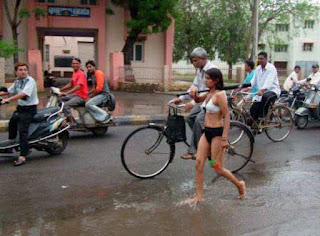Times Square: The City’s Id, Now and Always In 1981
Times Square: The City’s Id, Now and Always
In 1981, in an incident that attracted international attention and spurred a citywide existential crisis, a 26-year-old man from Connecticut was set upon, stripped naked, and chased by a jeering, bottle-throwing crowd in Times Square at night — “shadowy figures, drug peddlers, con artists, vagrants,” as the Times would later describe the area’s inhabitants — into a subway station, then onto the tracks, where he died. In 2015, I’m watching the modern-day equivalent of that scenario play out, the only differences being that it’s the middle of the afternoon, no one’s throwing bottles, the victim is not really in mortal danger, and the crowd she’s being set upon by consists of Iron Man, two Minnie Mice, Elsa from Frozen, and Elmo.
I’ve just arrived in Times Square to investigate the seemingly lawless chaos that has, of late, attracted international attention and spurred a citywide — or at least tabloidwide — existential crisis. I’ve been here for exactly one minute. The woman, who made the obvious tactical error of entering Times Square with her phone visibly in hand, now finds herself corralled by costumed cartoon characters looking for tips in exchange for a photo. They encircle her with such familiarity that I honestly wonder for a moment if she’s yet another Minnie, newly arrived and not yet costumed for her shift.
Throughout New York’s history, Times Square has served as a bellwether of the city’s current mood — as well as the perceptions of the city, both for those who live here and those who don’t. Once, Times Square was a high temple of glamour, the glowing heart of a go-go metropolis. Then it, like the city around it, slid into seedy decline. When much of New York was sleazy and dangerous, nowhere seemed sleazier or more dangerous than 42nd Street. And when Times Square came to feel too touristy, it mirrored a parallel worry that New York itself was losing some of its intrinsic grit. Times Square exists less as a crossroads than as a repository for our collective hopes and fears for the city. Now it’s entering a new phase — perhaps the strangest, most inscrutable one yet.
The most commonly voiced description of the New Times Square — the one midwifed into existence in the ’90s by Rudy Giuliani and Michael Eisner; the one that now welcomes more than 39 million tourists a year, roughly equivalent to the population of Poland; the one we associate more with Mickey Mouse than Ratso Rizzo and Carson Daly than Damon Runyon — is “Disneyfied.” This is almost never meant as a compliment. Yet even the area’s most cynical critic could never have envisioned a day when the famously sanitized, corporatized, Disneyfied Times Square would become infamous for a plague of vaguely mangy Disney characters shaking down tourists for money.
And that’s not even to mention the puritan furor over the naked ladies with the painted bosoms.
“I gotta go, I gotta go, guys,” says the woman good-naturedly, still smiling, as she’s pincered between two Minnies. The mute characters paw at her in a kind of creepily adorable pantomime. Iron Man offers to take her picture, as if this were a moment she’d want to cherish. She starts to squirm. “I gotta go,” she says more forcefully, then wriggles free from the scrum. As she hurries north, her eyes turn not to the world-famous gauntlet of towering digital screens overhead but to the five-inch screen clutched in her hand. This is when I realize that this woman must be a native New Yorker. Because as she beetles across the plaza toward her destination, she seems determined to avoid, or at least ignore, whatever it is that Times Square has become.






Comments
Post a Comment